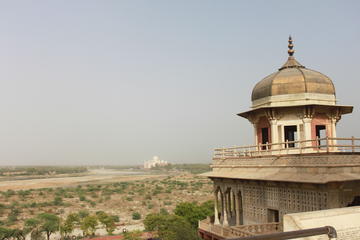Agra
TIME : 2016/2/22 11:30:40

Agra
Crowded, congested Agra, a city of some 1.5 million people in Northern India, often lands a spot on any first-time visitor’s itinerary for one reason: the magnificent Taj Mahal. While the gorgeous white marble mausoleum and the nearby Agra Fort offer reason enough to visit, few take the time to linger and appreciate the historical significance of a place where one Mughal emperor after another left behind grand architectural wonders as testament to the dynasty’s wealth and power.
The first historical mention of Agra dates back to the 11th century, though the great Mughal capital wouldn’t reach its “Golden Age” until the early 16th century when the capital was officially moved from Delhi to Agra. Ironically, Shah Jahan, the man behind the city’s biggest claim to fame, was also responsible for shifting the capital back to Delhi, setting in motion Agra’s decline.
Like the Taj Mahal, many of Agra’s other historic sites take the form of tombs and mausoleums. For example, the tomb of Itmad-ud-Daulah, often billed as a mini Taj Mahal, was considered one of the most innovative works of its time and likely served as an architectural inspiration to Shah Jahan. While less ornate, the Akbar’s Tomb is no less impressive.
Practical Info
Agra is located 124 miles south of New Delhi and 78 miles north of Gwalior.
